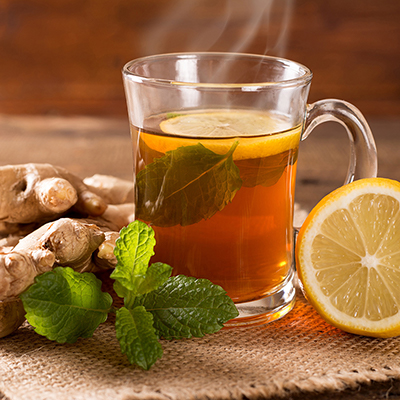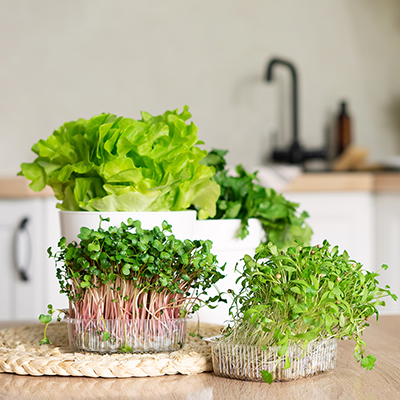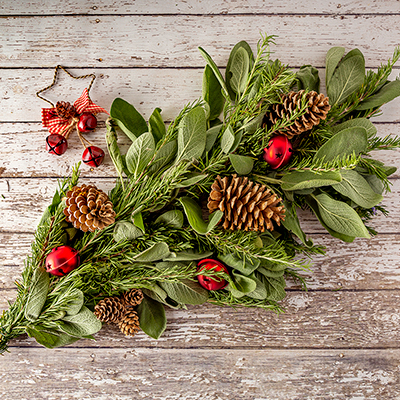Types of Heat Loving Herbs
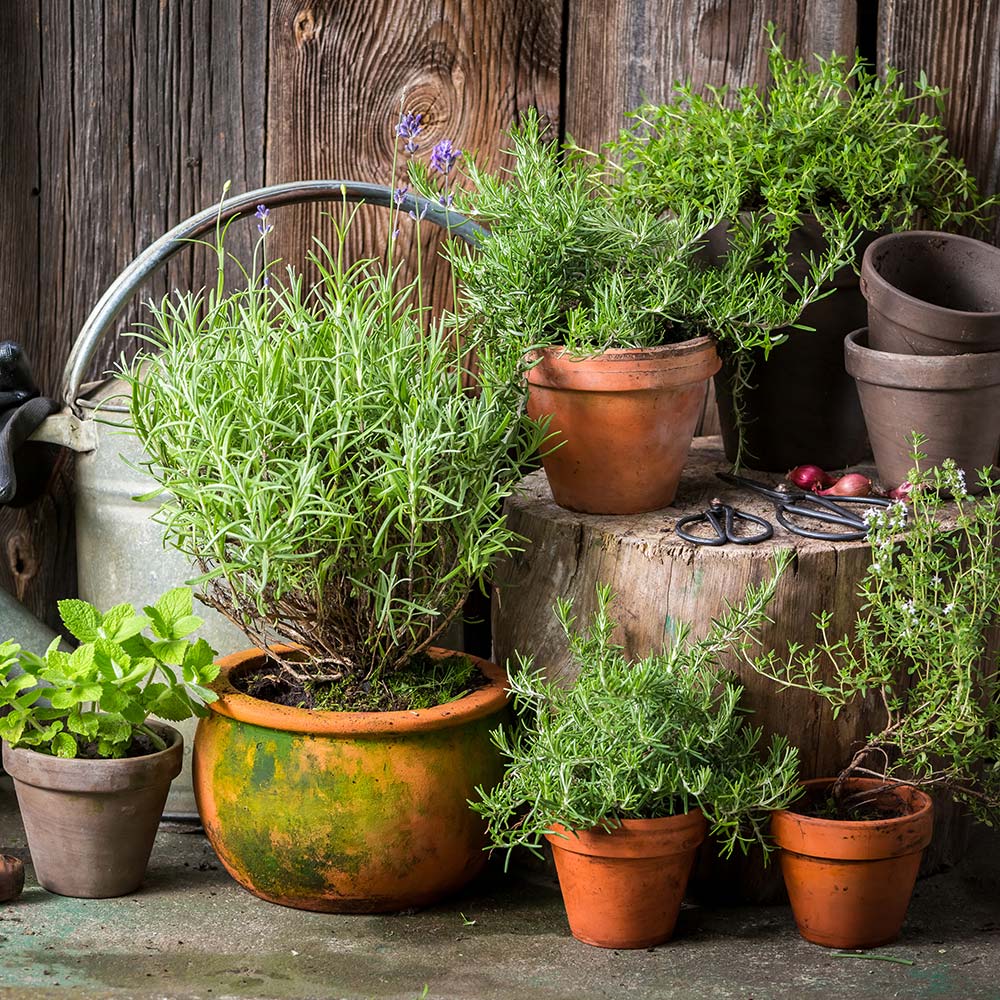
Last updated September 7, 2023
Fresh herbs are the perfect complement to the garden and are handy in the kitchen. When the weather warms in spring, head outside and plant herbs like basil, thyme and rosemary that thrive in the summer heat. Discover the herbs that do well outdoors and learn how to plant and care for them.
Table of Contents
Herbs That Grow Well Outdoors
How to Plant Herbs in Containers
How to Plant Herbs in the Garden
Choose the Right Soil for Herbs
Water Regularly
Feed as Needed
Herbs That Grow Well Outdoors
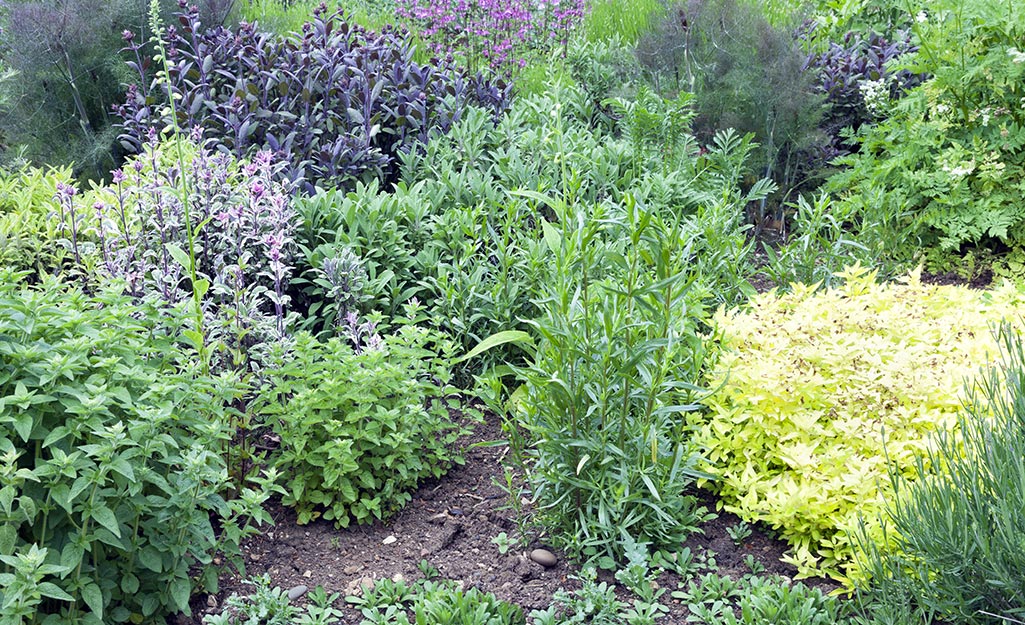
A small herb garden is best for beginning gardeners. Herbs are among the easiest plants to grow and are a terrific addition to your landscape and your table. Some varieties to consider are:
- Basil
- Chives
- Coriander
- Dill
- Fennel
- French tarragon
- Mint
- Oregano
- Parsley
- Rosemary
- Tarragon
Herbs have different needs for water, light and weather. Check the plant tags to find ones that will work well where you will be planting.
How to Plant Herbs in Containers

Keep herbs near the kitchen door or window for easy access when cooking. Simply plant them in an attractive container near your house and fresh herbs will be only footsteps away.
- Start with a planter big enough for the number of herbs you wish to grow. An 18-inch or larger container has space for up to five herbs, while a 14-inch container will fit three. Measurements refer to the distance across the top of the pot.
- Find a sunny spot to place your containers. Fill them with potting mix, and then add your favorite herbs. Water well to get growing off to a good start.
Tip: Leave plenty of space between herbs to give them room to grow.
How to Plant Herbs in the Garden

Herbs that thrive outdoors don't need a special planter. Add them right to your garden beds and watch them grow alongside shrubs, vegetables and flowers.
Choose a spot that fits the light requirements for your desired herbs. Many like full sun, which equals six to eight hours of direct sunlight per day. Others prefer part sun areas that receive four to six hours of direct sun.
Once you have your spot, use a garden trowel to dig a hole wider and deeper than the seedling. Fill with two inches of compost and then add your plant. Push the soil around the plant and press to remove air pockets around roots. Water well with a watering can or hose.
Choose the Right Soil for Herbs
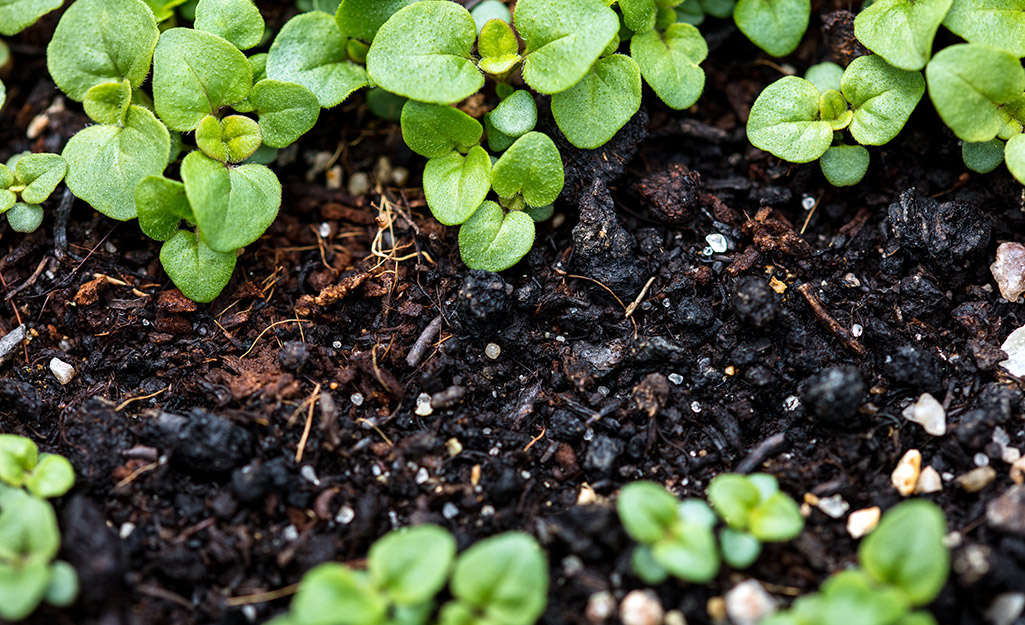
Herbs receive nutrients for growing from their soil. As a result, the right type for your specific herbs will set you up for the best growth. For containers, try an all-purpose potting mix. A potting mix is a mixture of organic matter like moss and other substances that help plants grow.
Before you plant herbs outdoors in the ground, do a pH soil test with a pH tester. The pH level tells you how acidic your soil is. A pH level of around 7 is neutral. Below 7 is acidic and above 7 is alkaline, which is the opposite of acidic. Most herbs like slightly alkaline soil. If your soil is acidic, add a little lime to raise the pH and test again.
Water Regularly
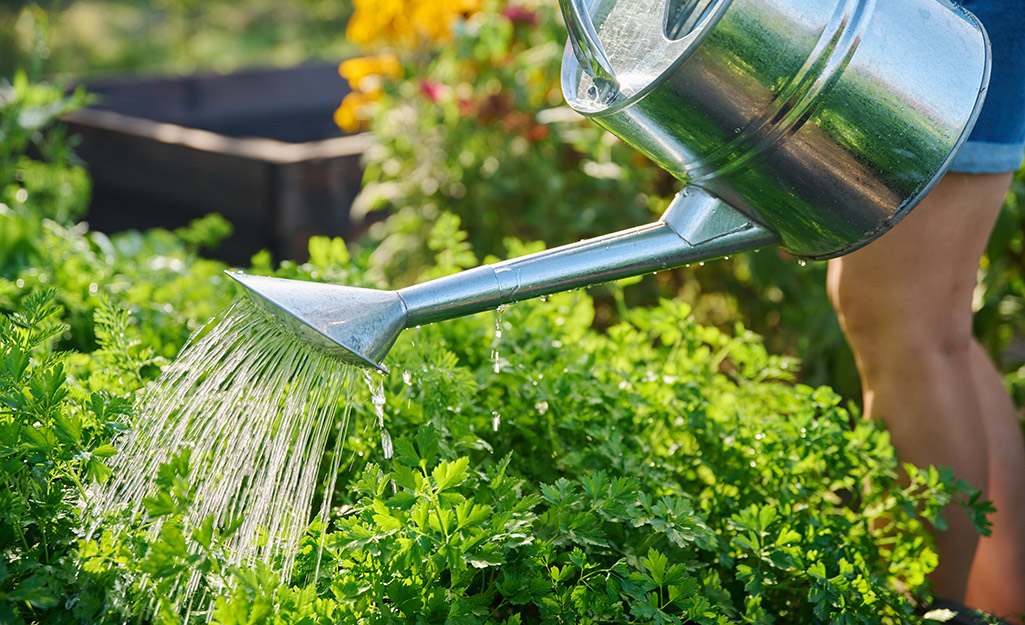
Water right after you plant to give herbs the moisture they need to start growing. Generally, herbs do well when watered about once per week. In extremely hot weather, increase to twice per week. To start and stop water flow on schedule, use a hose timer to make things easier in garden beds. If your herbs are in a pot, touch the soil with your finger and water if it feels dry.
Feed as Needed
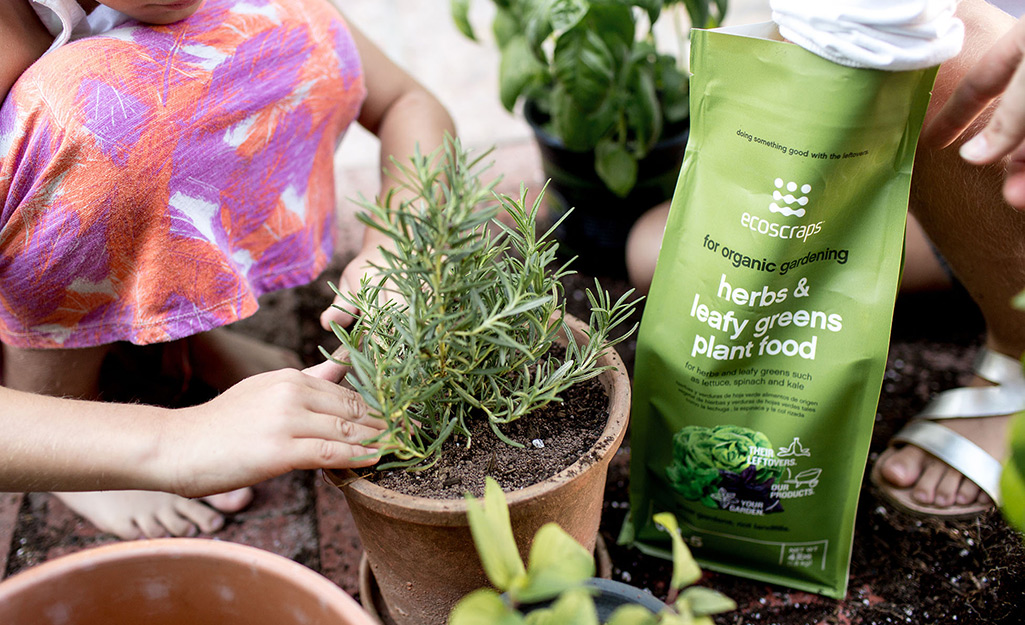
Once herbs grow, you can harvest them again and again if the plant continues to thrive. Fertilize with plant food to keep your herbs growing strong. A liquid organic fertilizer made for herbs is a great choice. Follow the directions on the package to prepare and apply it.
Wait about one month after planting to begin feeding. Slow-growing herbs like lavender, mint, oregano, rosemary and sage may only need one feeding. Herbs that grow fast, like basil, dill and chives, may benefit from additional feedings once per month.
Tip: Yellowing leaves are a sign that your herb plant needs plant food.
Deal with Pests Right Away
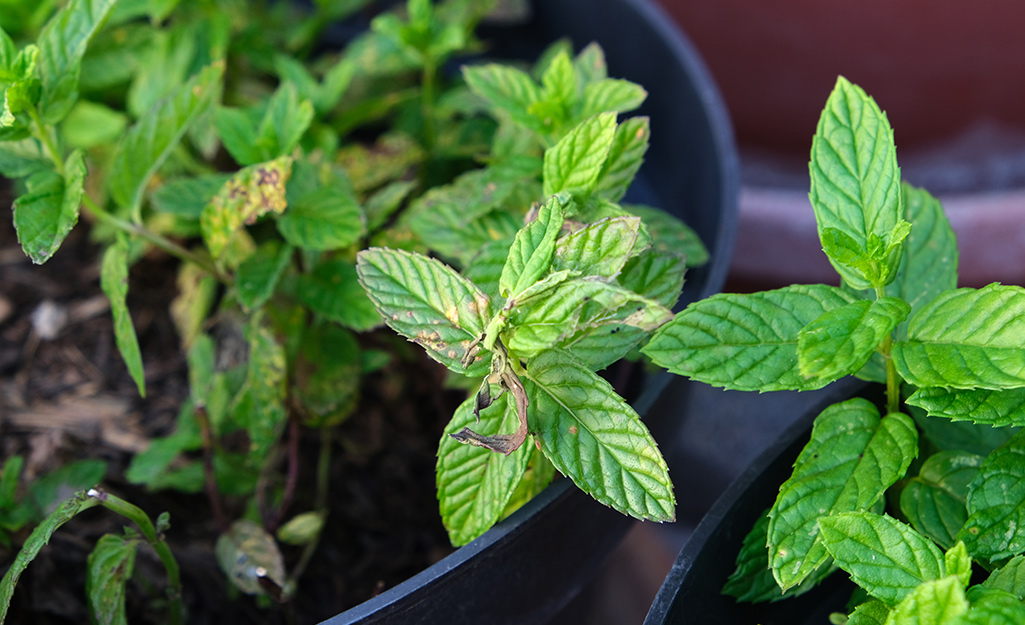
Aphids, caterpillars, Japanese beetles and spider mites may eat your herbs before you do. Signs that your herbs have pests include holes in the leaves, spotty foliage and poor growth.
Check your herbs every day for pest activity. If you spot any, take action fast to protect your plants. Use the pest control problem solver tool to identify the pest and get tips on what to do. In many cases, organic pest control products are enough to get rid of herb pests. Follow the directions on the package for the best results.
Prune and Trim
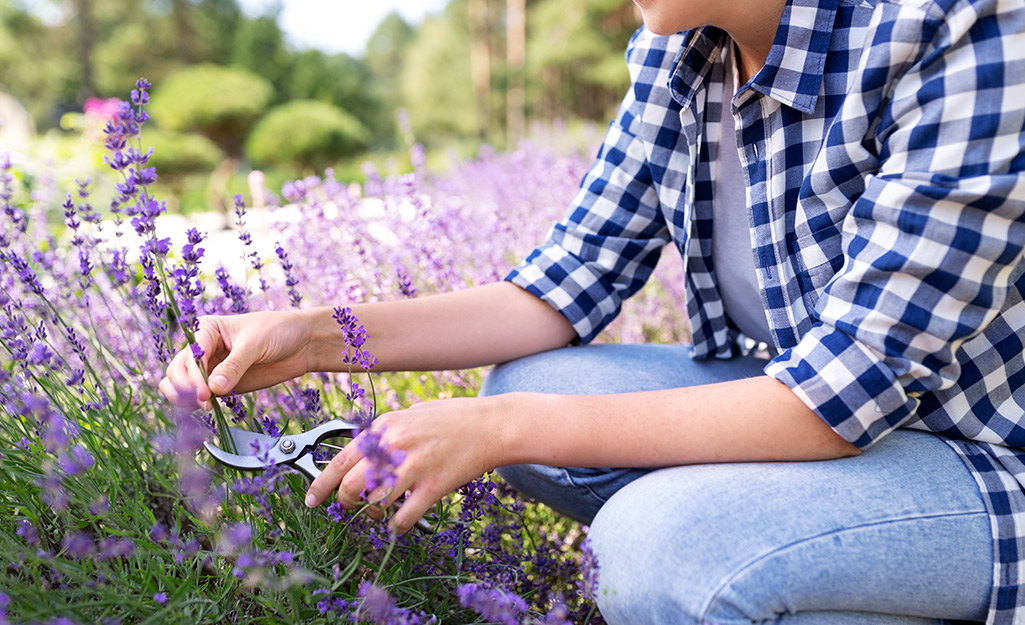
To keep herbs growing, prune them often. Pruning means removing some leaves and stems to make a plant regrow them.
With many herbs, you can use your fingers to pinch off the top leaves. Herb scissors or kitchen shears
may be necessary for some thicker plants. For herbs with woody stems like rosemary, pruning shears can be a better option. Prune herbs every week during the summer. Stop pruning about eight weeks before when you believe frost will occur.
Tip: Remove only up to one-third of the plant when you prune for best results.
Harvest When Ready
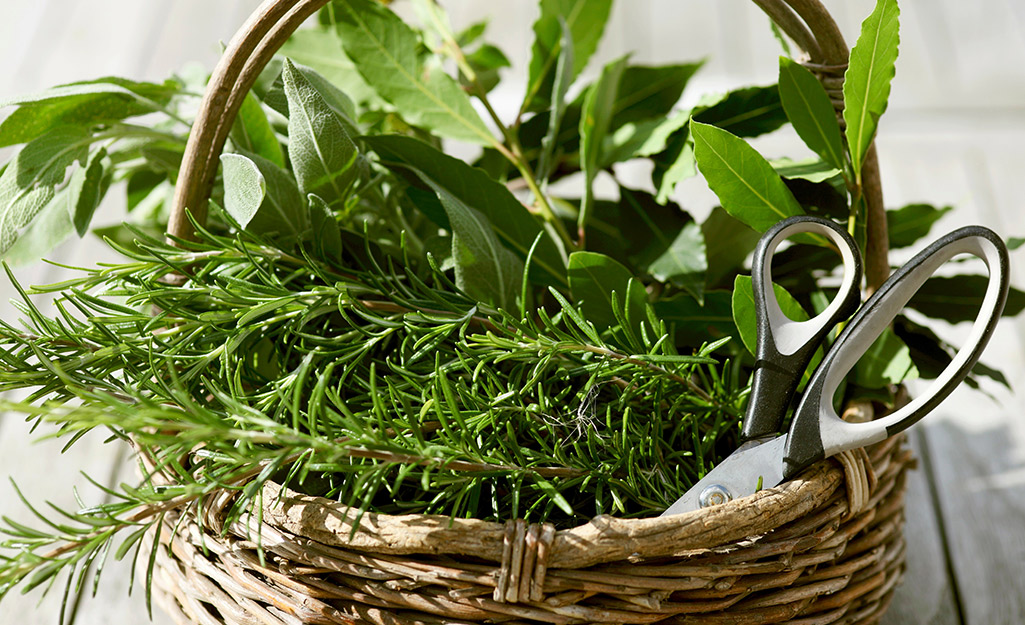
Once your herbs begin to grow, harvest them whenever the plants are ready.
- It is best to pick flowery herbs like lavender when buds appear but have yet to open. With other herbs, wait until there is enough growth for you to use, removing just one-third of the plant.
- Remove stems and leaves with your fingers or use kitchen shears or pruning shears if growth is hard to pinch.
- For best results, harvest after the morning dew dries. Plan to pick before the hottest part of the day, as high temperatures can reduce the oils that give herbs flavor.
Tips for Storing Cut Herbs
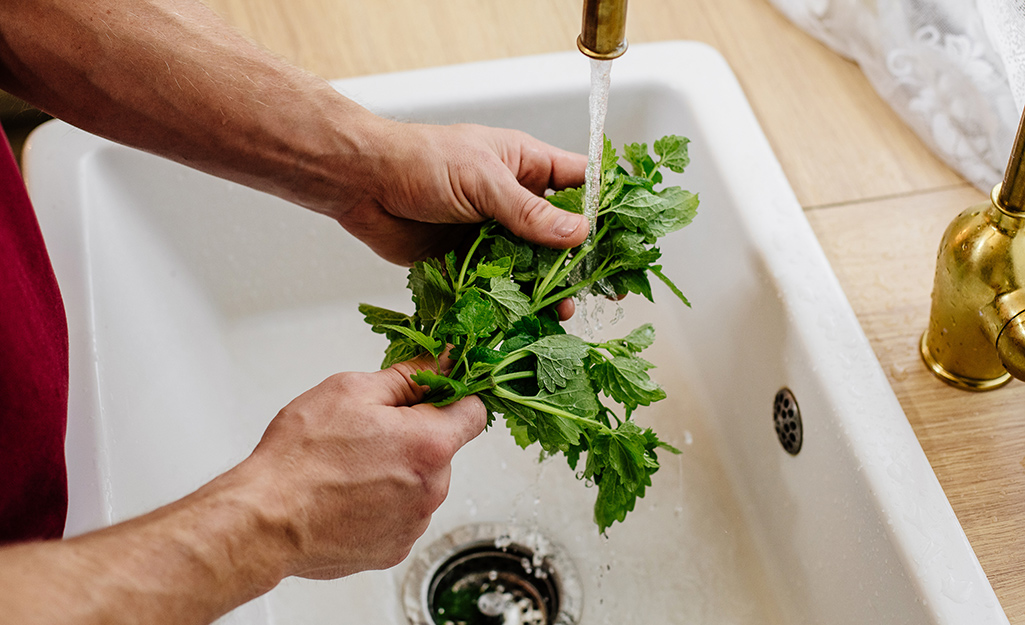
Once you get your cut herbs inside, wash them well and dry them with a dish towel or salad spinner.
- If you plan to use them within a few days, drop herbs stem-side down in a drinking glass with one inch of water to keep them fresh. Place them in the refrigerator and change the water every two to three days.
- If you want to freeze herbs for future use, roll the herbs inside a damp paper towel like a burrito. Slip the towel into a resealable freezer bag and your herbs are ready to freeze.
- For very delicate herbs, mix cuttings with a teaspoon of water or olive oil and place in an ice cube tray. Once solid, transfer the cubes to a resealable freezer bag.
With regular watering, feeding and pruning, you can grow herbs outdoors all summer. Pick varieties that work in your growing zone and keep a close eye on growth for the best results. To start your herb garden, get the plants, potting mix, garden tools and other essentials you need. The Home Depot delivers online orders when and where you need them.







